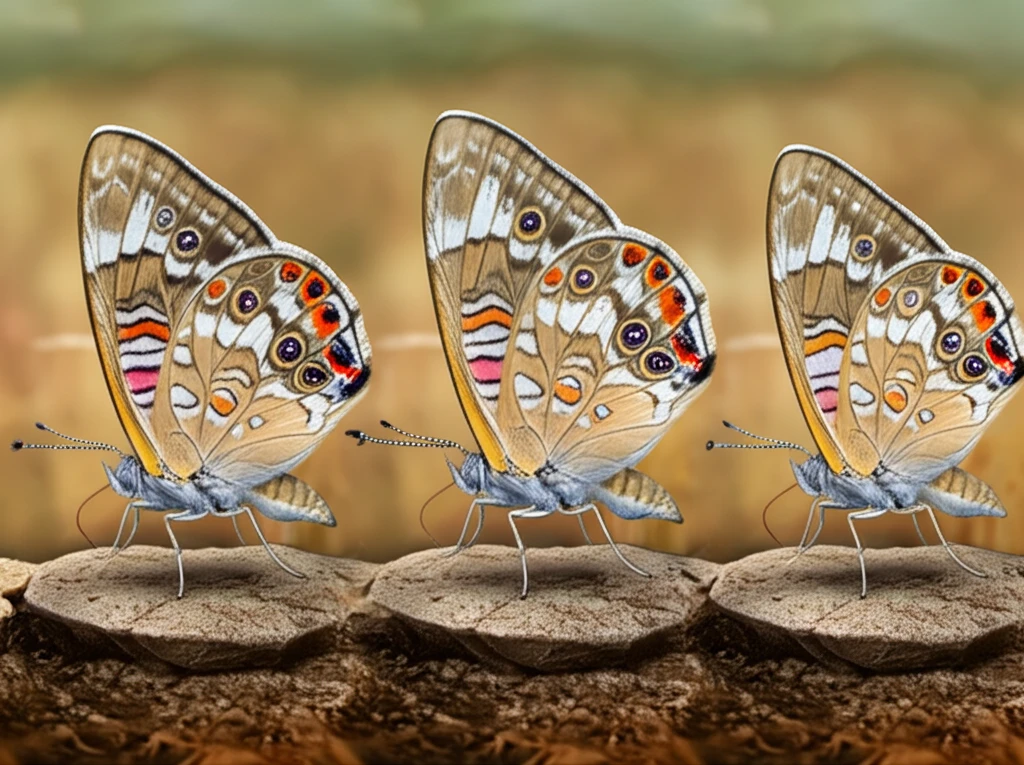
Butterfly Breakthrough: Unlocking the Secrets of the Aricoris constantius Group
"New research reveals three distinct butterfly species hiding under a single name, revolutionizing our understanding of biodiversity in Brazil and Paraguay."
For over a century, the butterfly known as Aricoris constantius (Fabricius, 1793) has been considered a single, widespread species. However, recent meticulous examination of these butterflies has revealed a surprising truth: what we thought was one species is actually three! This discovery, detailed in a groundbreaking paper, redefines our understanding of butterfly diversity in southeastern and central Brazil, extending into Paraguay.
The journey to this revelation was far from straightforward. The genus Aricoris, established in 1851, has a complicated history, often serving as a temporary home for various unrelated butterfly species. Over time, many species were moved in and out of the genus, leading to confusion and taxonomic challenges. This new research addresses this historical ambiguity by clearly distinguishing three separate species within what was previously considered the Aricoris constantius group.
This re-evaluation isn't just about splitting hairs; it has broader implications for conservation efforts and our understanding of biodiversity. By recognizing these butterflies as distinct species, we can better assess their individual conservation needs and protect their unique habitats. This is especially crucial in regions like the Brazilian Planalto Central, where habitat loss and degradation threaten numerous species.
Unmasking the Trio: Aricoris constantius, Aricoris tutana, and Aricoris monotona

The study, spearheaded by entomologist Curtis J. Callaghan, meticulously analyzed 125 specimens, primarily from the Lepidoptera collection of the Departamento de Zoologia, Universidade Federal do Paraná, Curitiba (DZUP), along with other significant collections. Through detailed morphological analysis, including examination of wing patterns and genitalia, Callaghan identified key differences that distinguished the three species: Aricoris constantius, Aricoris tutana (Godart, [1824]), and Aricoris monotona (Stichel, 1910).
- Aricoris constantius: Uniform marginal black spots and distinct discal band.
- Aricoris tutana: Tiny, sharp marginal spots and prominent submarginal ocelli on hindwings.
- Aricoris monotona: Absence of marginal spots (except for a small dot in some specimens) and lighter distal wing coloration.
A Call for Continued Research and Conservation
The re-evaluation of the Aricoris constantius group underscores the importance of continued taxonomic research in biodiversity hotspots like Brazil. By accurately identifying and delineating species, we gain a clearer understanding of the intricate web of life and can develop more effective conservation strategies. This discovery serves as a reminder that even seemingly well-known species may harbor hidden diversity, waiting to be uncovered with careful observation and analysis. Further research into the genetic makeup, behavior, and ecological interactions of these three Aricoris species will undoubtedly reveal even more fascinating insights into the natural world.
